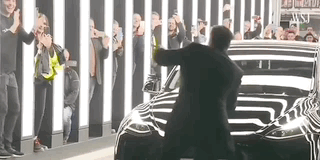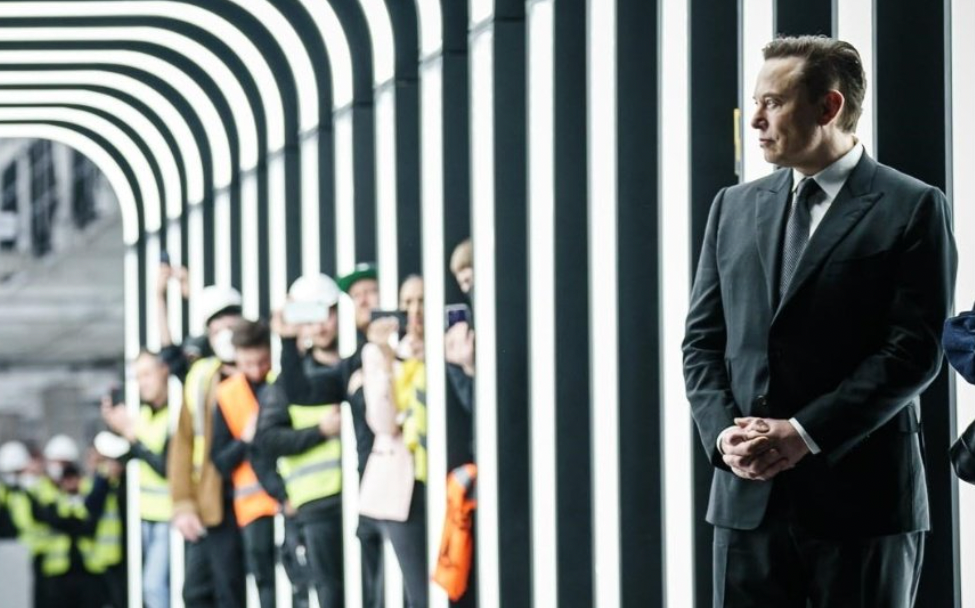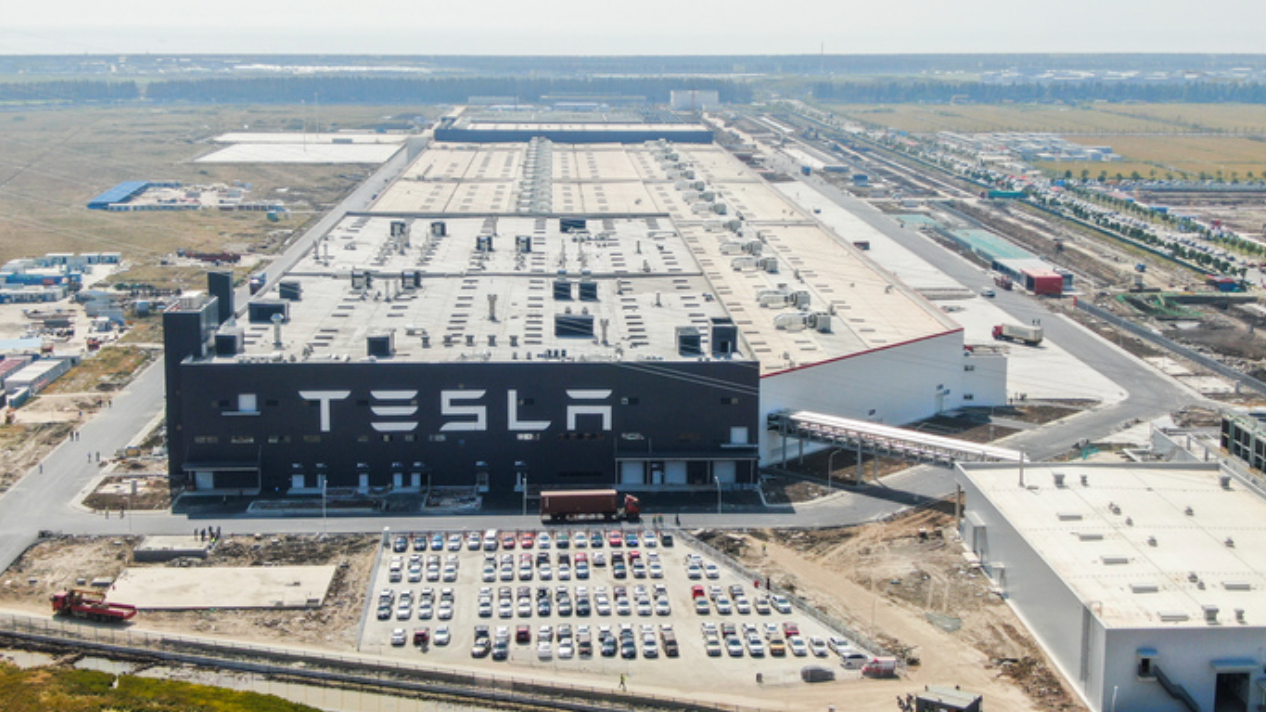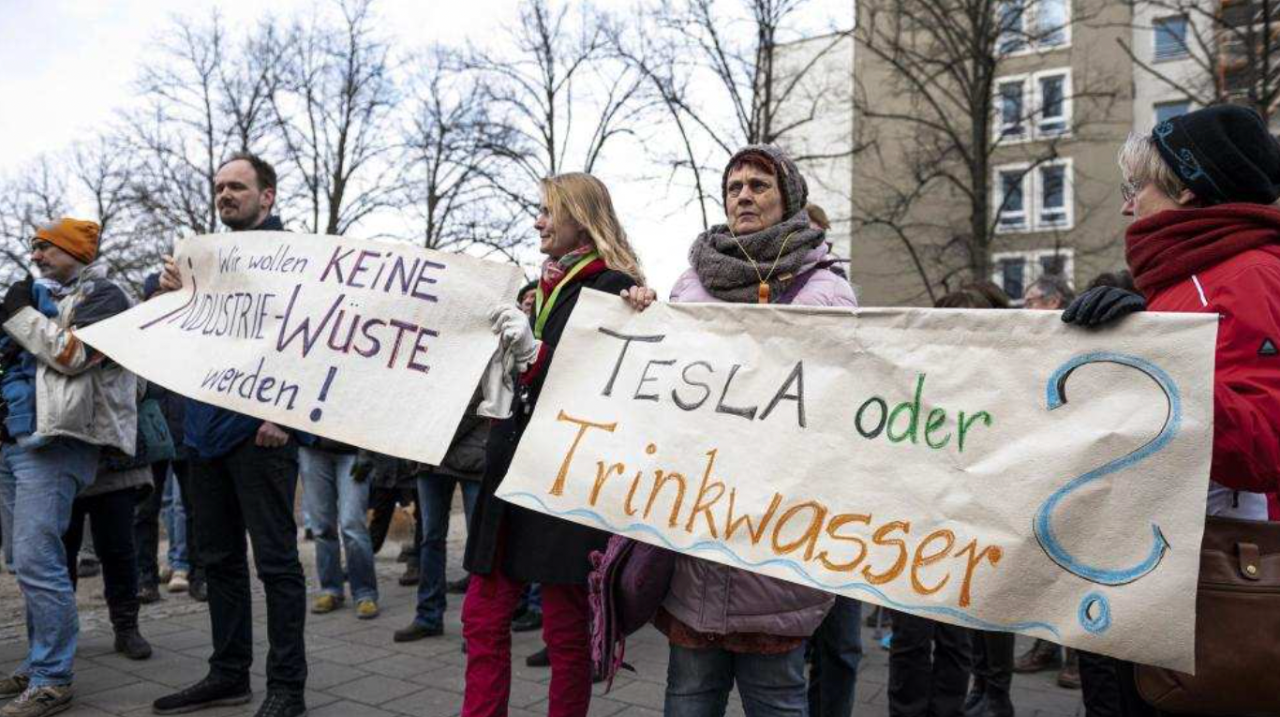From the passenger temple of Wanda, Posted by Mobvoi
Intelligent Car Reference | Public Account AI4Auto
Tesla’s Giga Berlin plant has finally begun deliveries.
Delayed for a full 8 months from the original plan, it has taken over 2 years since the construction began in early 2020. During this time, Tesla’s German factory plans were repeatedly delayed and changed.
Musk publicly mocked it, saying that dealing with things in Germany is too difficult.
What can be done in less than a year in China, why is it progressing so slowly in Germany?
Finally delivered after repeated delays
Tesla’s super factory located in Berlin, Germany, has finally commenced production and delivery, with the first 30 Model Ys being delivered.
Musk personally attended the event, witnessing Tesla’s entry into local production in the European market.
However, Musk has been anxious for this moment for too long.
Prior to this, every time Tesla’s Berlin factory appeared in public view, the keywords were always: delay, delay, and delay.
According to Tesla’s plan, the German factory is designed with an annual production capacity of 600,000 vehicles, and this year it will reach 150,000 vehicles, responsible for Tesla’s local production in Europe.
However, it was originally planned to commence production and deliveries in July of last year, but the delivery time was repeatedly delayed due to various approval issues, as well as changes in Tesla’s production plan.
The German super factory is part of Tesla’s overseas factory plan. It has already been determined as the site on November 13, 2019, just before the Shanghai factory commenced production, and officially started construction at the beginning of 2020.
However, after that, the construction of the German factory, like the Tesla Cybertruck, fell into a delay quagmire.
Firstly, it got off to a bad start. Shortly after the construction began, the factory was protested by local environmental protection organizations. The reason was that the construction of the Berlin factory required clearing more than 2,000 acres of forest from the original site, which would cause damage to the habitat of local wildlife.
Then, various problems arising from the clearing of the forest emerged, and Tesla subsequently entered a tug-of-war with environmental organizations and governments.
Musk then announced a series of remedies, including building three times more acres of forest land, reducing the water consumption of the German factory by 1/3, and so on. Eventually, the factory was allowed to start official production in July of the same year.
The originally scheduled delivery time in July 2021 was also delayed until around October 2021.
However, this is just the first step of the German factory’s long march.In terms of approval, Tesla still faces long-term public interest lawsuits. Even if the factory is built, it cannot be put into production if it cannot be approved.
During the construction process, Tesla has been ordered to stop work several times due to the strict environmental approval process in the local area and disputes over the infringement of workers’ rights during the construction process.
During this period, Tesla and the local German government department have gone from sweet to bitter.
In April of last year, Tesla publicly issued a statement stating that the German government’s factory approval process is too bureaucratic, which has slowed down the progress of factory construction, while the local approval government accused Tesla of starting construction without permission.
Even Musk expressed dissatisfaction when inspecting the progress of the German factory construction, hoping that the local approval department could be less bureaucratic.
In October 2021, Tesla’s German super factory finally officially completed, but the waiting continues, and the last hurdle for the factory to officially start production-public interest litigation has not been passed.
It was not until early March, after 843 days, that Tesla’s German factory was approved for production.
In addition, Tesla’s plan to produce 4680 batteries at the German factory has been forced to return to its Texas factory in the United States due to back-and-forth struggles.
For this reason, Tesla missed several billion euros in technology subsidies from the German government.
No wonder Musk has repeatedly expressed his dissatisfaction, losing several billion euros aside, Tesla’s long-term absence in Europe has led to long-term production capacity pressure.
How about other Tesla factories?
When Musk publicly complained about how difficult it was to do business in Germany, he must have missed the “Shanghai speed.”
Tesla’s first overseas factory—the Shanghai super factory—took only 11 months from construction to production, which you might not imagine.
The official start of Tesla’s Shanghai factory was on January 7, 2019. Less than a year later, on December 30, 2019, Tesla delivered the first batch of Tesla Model 3 to 15 employee owners at the Shanghai super factory. At the end of 2020, the Shanghai factory rapidly started production of the Model Y.
By October 2020, the Shanghai super factory had already undertaken Tesla’s exports to Europe and Australia, and now the main production of European Teslas is also undertaken by the Shanghai factory.And the Shanghai factory has also become a key to turn around Tesla’s fate.
After the Shanghai factory went into operation, Tesla’s annual production and delivery in 2020 reached 510,000 and 500,000 respectively, an increase of nearly 40% compared to the previous year.
At the same time, 2020 also became Tesla’s first profitable year since its establishment.
By 2021, Tesla’s Shanghai factory continued to play a role, with an annual production of 480,000 vehicles, surpassing Tesla’s local California factory and becoming its main export center.
Within just 2 years, the Shanghai factory was built and put into operation to save Tesla, and it wasn’t until then that the Berlin factory began production. Elon Musk is undoubtedly the one who understands best how efficient Chinese manufacturing is.
In addition to the Shanghai and Berlin factories, there is also good news from Tesla’s native Texas factory:
Its Texas Gigafactory has completed production deployment, and the first model to be produced will be the Model Y. It is also speculated that the Cybertruck that has been pigeonholed by Musk countless times will be produced by the Texas factory.
It is reported that the Texas factory is Tesla’s third Gigafactory, and it is expected to have a production capacity of 150,000 vehicles this year.
In other words, all of Tesla’s factories currently have production capacity. According to Tesla’s plan revealed at the 2021 earnings conference, its main task in 2022 is to increase production capacity.
Among them, the Shanghai, Texas, and Berlin factories will be the main directions for upgrading. Tesla has previously announced that it will invest 1.2 billion yuan in the Shanghai factory to expand its production lines, which is expected to be completed in April this year.
By then, the annual production capacity of the Shanghai factory will reach 1 million vehicles.
Capacity expansion is one aspect, and on the other hand, after Tesla’s revival in Shanghai, with the delivery of the Berlin factory, it will also usher in another major event this year:
Confronting European automakers head-on, either in the German car stronghold led by BBA and Volkswagen, or against the century-old luxury car brands that dominate the market.
I don’t know if these long-established luxury car brands that have dominated the industry for a century can withstand Tesla’s strong attack on their home turf.
After all, according to research firm Canalys, 54% of all new electric cars sold in Europe last year had Tesla’s brand on their license plates. The remaining small part of the market belongs to European local car companies.
One more thingInteresting thing is, at the delivery ceremony of Tesla’s Berlin factory, Musk performed his signature move again:
Dancing in the middle of the ceremony, his moves were quite impressive.

But compared to last time in Shanghai, it seems a bit… less exuberant?
By the way, Musk’s face is indeed big enough that even German Chancellor Olaf Scholz came to the scene in person.
I wonder if Mr. Chancellor can appreciate Musk’s dancing?
— The End —
This article is a translation by ChatGPT of a Chinese report from 42HOW. If you have any questions about it, please email bd@42how.com.


